
by Kate S. Zalzal Wednesday, January 25, 2017
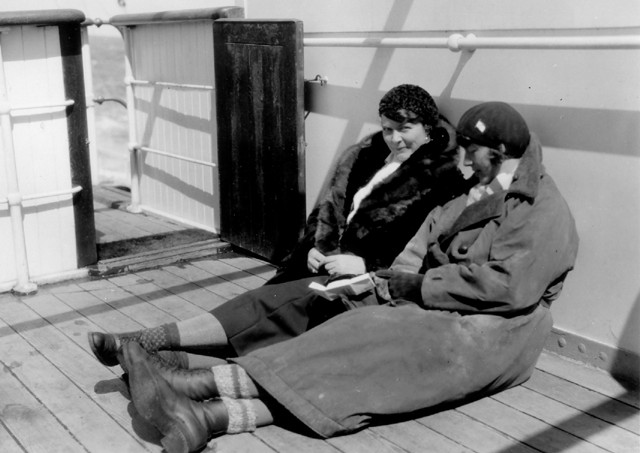
Norwegian Ingrid Christensen (left), along with her friend Mathilde Wegger, sitting on the deck of the M/S Thorshavn in 1931. They were the first women on record to see Antarctica on Feb. 5, 1931. Credit: Norwegian Polar Institute.
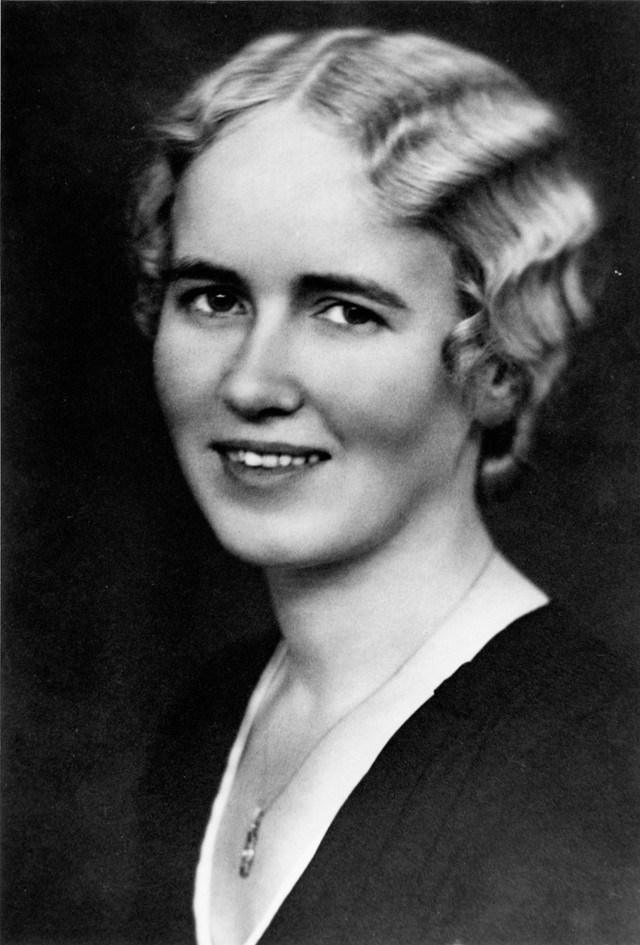
Norwegian Caroline Mikkelsen was originally credited as the first woman to set foot on Antarctica. On Feb. 20, 1935, she made landfall at the Vestfold Hills in East Antarctica. The distinction was later bestowed to Ingrid Christensen and three companions. Credit: Norwegian Polar Institute.
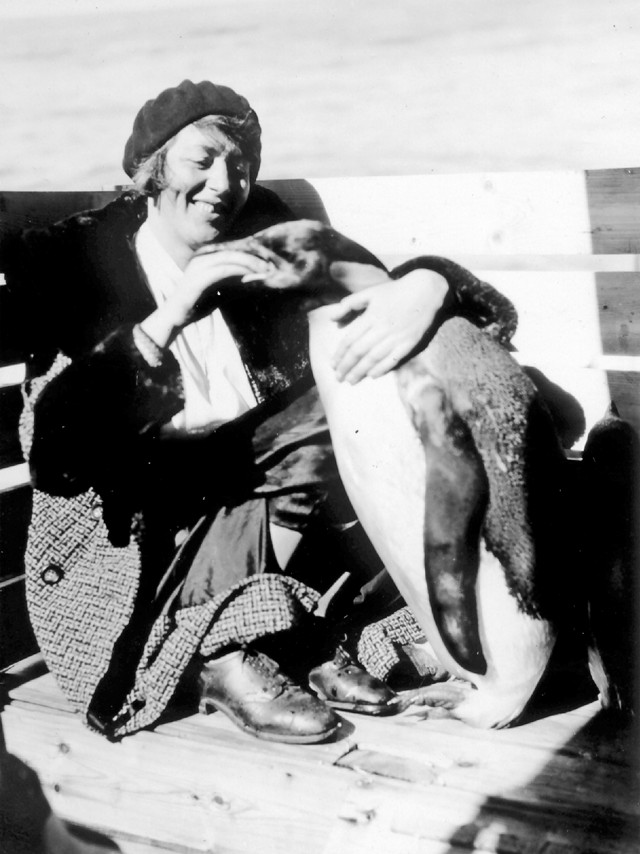
Wegger with a penguin taken aboard the Thorshavn. Credit: Norwegian Polar Institute.
We can only guess what Caroline Mikkelsen was thinking on Feb. 20, 1935, as she sipped her coffee, resting on a rocky hillside surrounded by the noise and stink of thousands of Adélie penguins. Minutes before, she had become the first woman to set foot in Antarctica and had helped hoist the Norwegian flag into place atop a rock cairn, claiming Norway’s influence in the land. Was she thrilled? Proud? Did she care about the significance of her presence there? We don’t know — little was recorded about the event; and most of what was recorded was lost for decades, resigning the episode, for a time, to footnote status amid the annals of a continent shrouded in mystery and a culture of polar exploration enraptured by the heroic and masculine deeds of the male explorers who had come before.
Mikkelsen, her whaling captain husband, Klarius, and seven others left their whaling resupply ship, the M/S Thorshavn, around 10:30 that morning and rowed a small life boat through choppy waters filled with pack ice to the rugged and rocky coast of the Vestfold Hills in East Antarctica. There, they made landfall in a small bay and hauled ashore supplies that were to be left behind as a depot for future travelers. The ship’s log describes the surrounding hills, the small stream flowing by and the thick, gold guano of the penguin rookery. By 2 p.m., the landing party was headed back to the Thorshavn, an Antarctic first having been achieved.
Mikkelsen wasn’t the first woman to attempt an Antarctic landing. Ingrid Christensen, whose husband Lars owned a Norwegian whaling company, had already spent months in Antarctic waters prior to Mikkelsen’s 1935 journey. Christensen first experienced Antarctica in early 1931, also sailing aboard the Thorshavn, with friend Mathilde Wegger. The expedition sighted and named Bjerkö Head on Feb. 5, 1931, making Christensen and Wegger the first women on record to see Antarctica.
The presence of Christensen and Wegger in Antarctica did not go unnoticed. Sir Douglas Mawson, famed explorer, survivalist, and leader of the British, Australian and New Zealand Antarctic Research Expedition, wired Sydney, Australia, on March 14, 1931, reporting a “pleasant surprise.” He wrote of encountering another ship: “… as we drew near enough to distinguish those on board, much astonishment was excited by the dramatic appearance on their decks of two women attired in the modes of civilization, theirs a unique experience, for they can make much merit of the fact that they are, perhaps, the first of their sex to visit Antarctica.”
The party was unable to make a landing on this voyage due to the rough coastline. Undeterred, Ingrid Christensen sailed again in 1933 with another prominent Norwegian woman, Lillemor Rachlew, whose husband had been on a 1907 Arctic expedition — but again, thick ice along the coast prevented a landing. Rachlew hunted seals, took photographs and kept a detailed journal of the adventure; her photographs were published in France in 1934, though her journal has since been lost.
Christensen sailed to Antarctica a third time in 1933–1934, this time with Norwegian shipping heiress Ingebjørg Dedichen. Again, attempts at a landing were thwarted, but the ship was able to nearly circumnavigate the continent. (Mikkelsen would make her successful landing the next year, sailing aboard the same vessel — the M/S Thorshavn — that Christensen and her friends took on this occasion.)
Christensen made her fourth and last trip in 1936–1937, travelling with her 18-year-old daughter Augusta Sofie, her friend Solveig Widerøe, and again with Rachlew. The Four Ladies Bank, an underwater plateau near Amery Ice Shelf, was named for these adventurous women. On this trip, Christensen flew over a part of the continent in a sea plane, dropping down a Norwegian flag and becoming the first woman to see Antarctica from the air. Christensen and the other women finally reached land, disembarking at Scullin Monolith in Mac. Robertson Land on Jan. 30, 1937.
Since it was generally known that Mikkelsen had been ashore in 1935, the arrival of Christensen and the other women was not considered a first. This would remain the prevailing view among the few people who knew of the story for decades, but it eventually would change.
By the 1930s, women had been trying to get to Antarctica for decades, drawn by the same allure of adventure, camaraderie and dreams of heroism that had tugged at male explorers. In 1914, three women wrote to Ernest Shackleton begging to go on his next expedition. Calling themselves “three sporty girls,” they wrote: “We are three strong, healthy girls and also gay and bright, and willing to undergo any hardships that you yourselves undergo … we do not see why men should have all the glory, and women none, especially when there are women just as brave and capable as there are men.” Shackleton responded in a letter thanking the ladies for their request. But he regretfully informed them that “there are no vacancies for the opposite sex on the Expedition.”
“The Antarctic. Another Expedition. Women Want To Go,” read an October 1919 headline in The Advertiser, a London newspaper. But applications from women were refused. Twenty-five women applied to join Douglas Mawson’s expedition in 1920, and more than 1,300 women applied to join a British expedition in 1937. None were permitted to go.
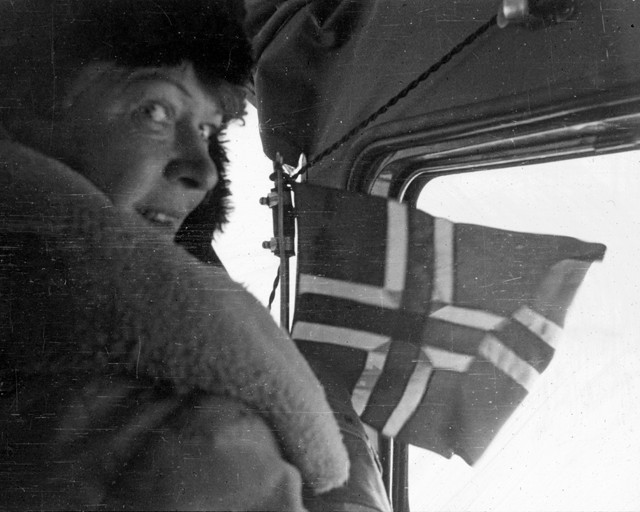
On the 1936–1937 expedition, Christensen flew over a part of the continent in a sea plane and dropped a Norwegian flag, becoming the first woman to see Antarctica from the air. Credit: Norwegian Polar Institute.
Wealth and prestige in the whaling and shipping communities set apart Mikkelsen and Christensen, and the other women who sailed with them, and granted them access. In the 1930s, whaling played a major role in the Norwegian economy. Christensen grew up in a whaling family, and her marriage to Lars Christensen consolidated their families’ influence in the industry. In Antarctica, Norway had ambitions in both whaling and exploration, and Lars Christensen’s fleet was able to do both.
The Thorshavn, the ship they sailed aboard most frequently, was a resupply ship that would meet up at sea with factory vessels — which processed and stored whale oil — to swap fuel and supplies for the oil. With the whale hunting ships working the waters, the crew of the Thorshavn could explore, map and look for lands to be annexed to Norway.
In the years after Christensen and Mikkelsen’s respective returns to Europe, much about their voyages was forgotten and their stories largely faded from record. After Mikkelsen’s husband, Klarius, died in 1937, she remarried and subsequently remained quiet about her Antarctic adventures for most of her life.
But in the 1940s and 1950s, when Antarctica was transitioning from an exploration outpost to a region of scientific inquiry, people became concerned with environmental and heritage conservation, and interest renewed in some quarters to find Mikkelsen’s landing site. The log from the Thorshavn described the land surrounding the site, but left a poor description of exactly where the cairn and flag were erected.
In 1960, two expeditioners based out of Australia’s Davis Station in East Antarctica found a small Norwegian flag while in the field. Again, however, the flag’s exact location was not recorded. Other groups similarly stumbled upon the site over the next few decades, but it wasn’t until 1995 — the 60th anniversary of the Mikkelsen landing — that a group from Davis Station decided to track down and finally record the location.
The flag and cairn were found 29 kilometers northeast of Davis Station, where the group confirmed suspicions that the site was actually within the Tryne Islands, some 5 kilometers from the mainland. It’s unclear whether the Mikkelsens realized this or if pack-ice and pressure ridges were such that it appeared that the landing site and mainland were connected. In the world of Antarctic exploration, landing on an island was considered secondary to landing on the mainland, so the first-on-land title was thus bestowed to Christensen and the three other women with her for their 1937 landing. But the honor was posthumous, with the discovery of the Mikkelsen site coming 20 years after Christensen’s death in 1976.
Diana Patterson, who was head of Davis Station in 1995 and a member of the group who rediscovered the Mikkelsen cairn, visited Mikkelsen, then 89 years old, at her home in Tønsberg, Norway. Patterson said Mikkelsen had clear memories of her Antarctic explorations. She died in 1998. Mount Caroline Mikkelsen is named after her.
The first women wintered over in Antarctica in 1947–1948. American Edith Ronne, whose husband led the mapping expedition, and Canadian Jennie Darlington, the wife of the expedition pilot, were among 128 men in a camp at Marguerite Bay. Female scientists didn’t begin working in Antarctica until 1969. When the first six women arrived at the South Pole that year, they disembarked the plane together, walking down the cargo ramp arm in arm so that each would share credit. But it wasn’t until 1974 that a woman wintered over at McMurdo Station, the U.S. Antarctic research center.
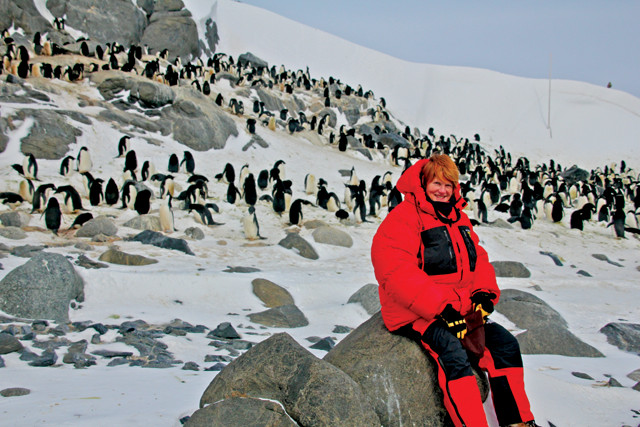
Jesse Blackadder, author of the historical novel "Chasing the Light" about Ingrid Christensen's Antarctic journey, at Mikkelsen's landing site in the Tryne Islands. Credit: David Hoskin.
Today, at least a third of the more than 1,000 scientists and support staff who return to “the Ice” each summer are women, who fill scientific, medical, logistical, support and leadership roles at research stations and outposts across Antarctica. But the stories of the first women to visit Antarctica continue to fascinate today: Their exploits have even been the subject of a historical novel called “Chasing the Light” by Jesse Blackadder.
Mikkelsen and Christensen were afforded access to Antarctica because of their wealth and privilege. But they bravely stepped outside of the traditional role for women at the time. In doing so, they helped break down barriers for future women to explore and study the vast expanse of the icy continent.
© 2008-2021. All rights reserved. Any copying, redistribution or retransmission of any of the contents of this service without the expressed written permission of the American Geosciences Institute is expressly prohibited. Click here for all copyright requests.